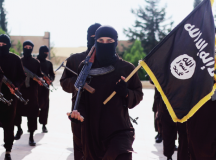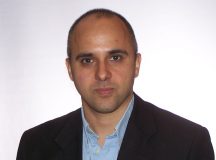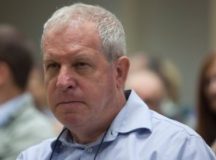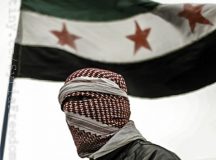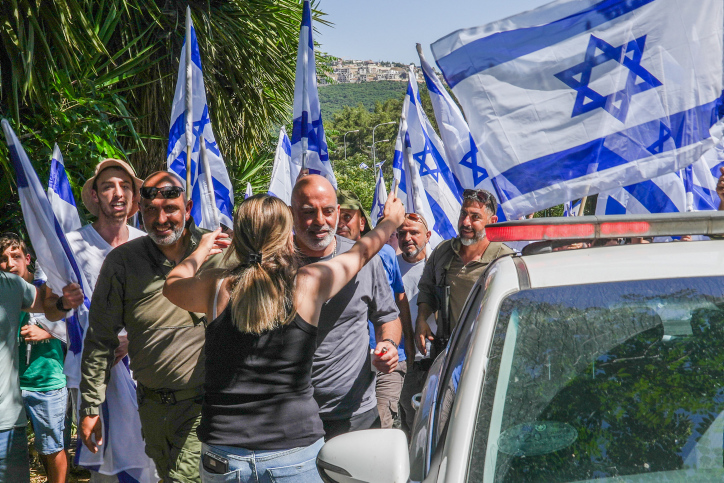Mosul has suffered three jihadist takeovers since 2004. In a detailed mapping of the conflict and its actors, Seth Franztman asks if the impending military defeat of Islamic State (ISIS) means the long-suffering city can carve out a different political future this time.
Introduction
On the morning of Friday, 4 November, an Iraqi column consisting of more than two dozen black-painted Humvees and mine-resistant ambush protected vehicles (MRAPs) set off into the Iraqi neighbourhood of Aden in Mosul. Several hours later they became stranded as ISIS fighters were able to immobilise several of its vehicles. The Iraqi elite counter-terrorism forces (ICTF) who were in the vehicles scrambled for cover in civilian homes. For 24 hours they fought the extremists. A CNN news crew led by Arwa Damon and Brice Laine documented the harrowing battle. Later ISIS published videos and photos of their men stripping the stranded vehicles of their weapons. ‘This is nothing, we might spend three or four months like this,’ one of the Iraqi soldiers told Damon during the battle.
Many leading observers and experts, such as Michael Knights, think the city will be fully liberated from ISIS in early 2017. ‘There is now an unprecedented opportunity to work with Moslawis [Mosul residents] to stabilise their city,’ Knights argued in mid-October. The fall of ISIS in Mosul is inevitable; it has only several thousand fighters to oppose 20,000 or so Iraqi soldiers that are closing on the city from three directions. The ninth armoured division and ICTF are coming from the south and east, and a unit of the 16th division is coming from the north. To the west, the city is cut off by Shia militias of the Hashd al-Sha’abi (Popular Mobilisation Units – PMUs). That leaves many wondering what will come next. Can the city be stabilised? Will it go smoothly? Will refugees be able to return? Can the interests of Iran, Turkey and the autonomous Kurdistan Regional Government (KRG), who all play a role in northern Iraq, be accommodated? Will the international community, around 60 of whose nations have backed the US-led Combined Joint Task Force against ISIS, be able to prevent the rise of a new form of ISIS in the future?
To begin to understand what Mosul will look like the day after ISIS is defeated, we need to understand what it looked like before.
Part 1: Mosul before ISIS
The battle of Mosul was launched on 17 October by Iraqi Prime Minister Haider al-Abadi. His forces had liberated other Sunni cities from ISIS closer to Baghdad, such as Ramadi, Fallujah and Tikrit. But Mosul is the real prize. It has been the centre of ISIS operations since the Jihadis swept into it in June 2014. Up until the ISIS conquest it was Iraq’s second largest city; a vast metropolis spread out on two sides of the Tigris River. On the western bank, called the ‘right bank’ by locals, was the old city. There was also an airport and urban sprawl from the Saddam Hussein era. On the eastern side were the ruins of ancient Nineveh, a university and newer neighbourhoods, connected by wide avenues.
The city had always been a centre of trade and was the heart of an Ottoman province. Historically, it was a diverse city with many Kurds, Assyrian Christians, Jews and Yazidi minorities. Jewish travellers remarked on its wealth and the relative security they enjoyed there. However, the decline of the Ottoman Empire changed the city’s position in the Middle East. From being a centre of trade it became a disputed region between modern Turkey and the British Mandate of Iraq. The British were intent on installing King Faisal in Baghdad, who had helped lead the Arab Revolt and was a keen ally of British military officer and diplomat T.E Lawrence. Because Mosul and the surrounding region had many Sunni Arabs it was seen as a bulwark against both Kurdish and Turkish irredentism. And of course there was oil. It was here that the newly formed Iraq would draw its northern flank, on the banks of the Tigris, and anchor itself in this city.
By the 1950s, Mosul had become a centre of Arab nationalism, influenced by the rising voice of Gamal Abdel Nasser in Egypt. By the 1960s it was central to Hussein’s plans for building Iraq into an economic and military powerhouse. He invested in Mosul’s infrastructure, and the locals became the backbone of the Ba’athist officer corps, sending more sons per capita than anywhere else in the country. In a sense, Mosul was Iraq’s Prussian Province, a key to ruling the construct area which was in its vast majority Shia and Kurdish, both of whom were brutally suppressed by Hussein.
In the 1990s, after Hussein was ejected from Kuwait, the US and its allies helped provide support for a Kurdish region in northern Iraq. The Kurdish hill country around Duhok is only 70 kilometres away and Erbil (Hawler) is only 85 kilometres. That means just one hour away from Mosul were the Kurdish landscapes where an autonomous region was rising. At the same time Shia Iraqis in the south of the country were looking to overthrow Hussein and rule Iraq. Their dream came true in 2003 when the US and the UK toppled the dictator and rolled into Baghdad. After Hussein fled Baghdad, his sons Uday and Qusay were killed by US forces in Mosul on 22 July 2003.
‘The increasingly influential Muslim Brotherhood and Salafi clerics and leaders in Mosul stirred these emerging fears of Sunnis,’ writes Knights, about the transformation of Mosul after the fall of Saddam into a centre of the Sunni insurgency. US forces had to contend with a brutal insurgency and launched major operations in 2004 and 2008 to clear out the insurgents. In early 2008 the number of terror attacks in Mosul reached more than 600: more than 20 a day. That represents a situation of war, not just ‘insurgency’. The groups that presaged the rise of ISIS, such as Al-Qaeda and Jamaat Ansar al-Sunnah operated in Mosul. Kurds and other minority Christians, Shabaks and Yazidis, who often lived in the eastern part of the city, were targeted in numerous attacks. Many of them fled to the KRG. Many Kurds I’ve spoken to say they were afraid to journey to Mosul. The head of a Kurdistan TV station who had dozens of reporters in the city said he and his men would often dress like Arabs, with khaffiyas, to drive around and not stand out.
The defeat of the Iraqi army in 2014 was thus a replay of former events. The difference was there was no US military ‘surge’ to help save the Iraqis. Instead, Iraqi military divisions melted away and ISIS captured some 2,000 armoured vehicles around Mosul. For more than two years ISIS brought its brand of extremism to the city, much as the Taliban once brought to Kabul in Afghanistan. Yazidi women were brought by the busload to Mosul and sold into slavery. ISIS ran a sophisticated system. It photographed all the women before raping and selling them. It established media offices and built sophisticated tunnel systems and improvised explosive devices (IEDs) to withstand the anticipated Iraqi army’s attempt to retake the city.
Many experts, prior to the Iraqi Mosul offensive, misunderstood the nature of ISIS rule and its defensive system. They predicted a million refugees and a city reduced to rubble. But ISIS viewed the Moslawis as its congregants and constituents. It’s an Islamic State and the city that exists is almost purely Sunni Arab (some Kurds and Shabaks remained under ISIS). The battle for Mosul is about one per cent the size of the battle of Berlin in 1945 in terms of forces and casualties. Similarly, the damage to the city will not look like Berlin. The US coalition has said it will not use airstrikes and bombardment on the city. That means small arms will be used street-by street to defeat a cunning enemy. But infrastructure will survive.
Qubad Talabani, deputy Prime Minister of the KRG in Iraq, speaking at Chatham House on 7 December told the audience that ‘a military victory, one where only territory is reclaimed from ISIS, to include their so-called capital, is not outright victory. ISIS did not fill a security vacuum in Iraq. It filled a political one.’ When ISIS is defeated, that political vacuum will remain unless we understand the several actors who will vie to shape Mosul on Day 2.
Part 2: Actors shaping Mosul after ISIS
The Sunni Arabs
The central fact in the life of Mosul since 2003 has been its degraded political influence in Iraqi politics. Its Sunni Arab population went from being a military and governing elite to being a minority. Commentators often prefer to see the Sunnis in Mosul as victims, fearful of Shia and Kurdish rule in the region. The solution sketched out has envisioned providing the Sunnis with an autonomous province similar to the KRG as a solution to the tendency of large numbers of people in Mosul and the area surrounding it, such as Tal Afar, to support jihadism. Former US Ambassador to the UN, John Bolton, even expressed support for a ‘Sunnistan’ in a November op-ed in The New York Times.
For Sunnis the painful wound of ‘losing’ Iraq will never be fully healed. There are Sunni tribes such as the Al-Jughayfa in Haditha or the Shammar in northern Iraq, who have traditionally opposed political Islam and the terror of extremists. There are Sunni tribesmen who have allied themselves with the Iraqi army and central government. Iraqi Member of Parliament Ahmed al-Jarba, who is from Mosul and fled to Erbil when ISIS arrived, has given frequent interviews with the media about the need to stabilise the city. Many Moslawis are not loyal to ISIS, as evidenced by the fact that out of a million of them only a few thousand joined the extremists. But the same Moslawis did greet ISIS when it arrived. They resembled the Austrians in the Second World War, who had greeted Hitler in 1938 and then claimed to be the first victims of Nazism when they were liberated in 1945.
Mosul‘s unstable politics since 2003 have resulted in three jihadist takeovers in 2004, 2007 and 2014. There is no evidence that within another ten years there won’t be another one, since the city is far from Baghdad and the weakened central government cannot control it. This makes for a power vacuum.
The Kurds
In the 1990s, and again in 2003, Kurdish forces threatened to take Mosul as they did Kirkuk. They did not because of Turkish warnings and their own inability to complete the operation. The Kurdish forces (Peshmerga) did play a role in helping to put down the insurgency in 2004 and sought to protect Kurds afterword. However, they failed in 2014 to prevent the conquest of the city and to anticipate the blitzkrieg that ISIS would launch in August 2014 against the Kurds.
Since October 2016, several meetings between al-Abadi and KRG President Masoud Barzani have resulted in closer cooperation between the Iraqi army and Peshmerga. ‘We assure the Mosul citizens that they will be safe and they will return to their normal life. We hope there will be no revenge between powers or anyone,’ Barzani said in a statement released on 17 October. That statement also noted that the governments in Baghdad and Erbil had launched a ‘joint committee’ to deal with political issues upon liberation.
The results of the meetings between the KRG and Baghdad were an agreement that the Iraqi army would re-take Mosul without the Peshmerga. The Kurds had said before that wherever the Peshmerga shed blood would become Kurdish territory after 2016. Baghdad opposes the KRG enlarging its areas into territories disputed with the central government, such as Kirkuk, Nineveh and Sinjar. But the Peshmerga were the ones fighting ISIS for two years along 1,000 kilometres of frontlines and they secured many areas. Baghdad wants Mosul to be its victory, to have its flag fly on the streets and in the Great Mosque where ISIS leader Abu Bakr al-Baghdadi declared his caliphate in 2014.
For Kurds, then, the liberation of Mosul is important for bringing security to the western flank of the KRG. This suggests Kurdish forces will want to stay in the Mosul District of Bashiqa and other areas they have taken, such as Mosul Dam. They learned in 2014 that insecurity in Mosul can lead to bad consequences for the KRG. The Kurds also want to return to their neighbourhoods. Up until recently they made up around 25 per cent of the city’s population, and they want their rights to those areas restored and to enjoy security within them.
Kurdish politicians and military figures have often said that the State of Iraq is finished and that the Kurdish region should be independent after ISIS is defeated. Kemal Kirkuki, a Peshmerga commander and former speaker of the KRG’s Parliament, speaking to Rudaw in June 2016, said: ‘We hope Iraq becomes three independent countries; Kurdistan, Shiitestan and Sunnistan. We will be good neighbours … we faced five genocides as part of Iraq, the state is no longer viable.’ Mosul would be the capital of Sunnistan in this scenario. This dovetails with demands by Sunni politicians for autonomy. Many Kurds are also very fearful of the role of Shia militias operating west of Mosul. They see the Shia militias as proxies for Iran and they know that Iran has opposed Kurdish independence. The KRG has opposed any role for Shia militias in Mosul which would further exacerbate sectarian tensions.
The Iraqi central government
The Iraqi central government would prefer a stable Mosul, but it is frustrated by its inability to invest in rebuilding the city. There are three million internally displaced people across Iraq, many of them living in the Kurdish region. These refugees fled fighting in places such as Ramadi, Fallujah and Mosul. In many cities, such as Ramadi, the government has not been able to clear the IEDs left behind by ISIS.
The same is true in Sinjar, which the Kurds liberated in November 2015. Most of the people cannot return due to insecurity, IEDs and destroyed homes. Lack of rebuilding will mean more instability. The Kurdish region cannot continue to house more than the million and a half refugees it already houses. The refugees fear returning to cities where there are checkpoints controlled by Shia militias. It took almost half a decade to get Mosul airport functioning after the US invasion. When will it re-open again?
ISIS has led to a new permanent map of Iraq. Despite claims in October by Kurdish President Barzani that Mosul will not become another Aleppo, the reality is that although these Sunni Arab areas are not destroyed, they have become places of permanent insecurity, poverty and extremism. Even in Sunni areas that didn’t fall to ISIS and stayed with the Iraqi government, such as Haditha, they have been starved of resources by Baghdad, according to local sources. If areas that remained within the government’s control are poor, then those that have seen two years of war and fighting will unlikely be rebuilt over the next decade. They may never be the same. An Iraqi government that can’t turn Baghdad and its environs into a success story, can’t rebuild Mosul.
Iran, Turkey and Nineveh
Iran and Turkey both have competing interests in Mosul. Iran would like to use its Shia militia proxies affiliated with the PMUs to link up Shia communities from Baghdad through to Tal Afar. Tal Afar was about one quarter Shia Turkmen before ISIS swept northern Iraq. There are other Shia communities in Nineveh, including Shia Shabaks, an ethnic minority. Using these communities as a tool, Iran would like to not only undermine any Sunni aspirations, but it also wants to protect these communities. The people of Tal Afar became refugees fleeing ISIS. Iran also wants to weaken the KRG. It opposes Kurdish independence and works closely with the Iraqi central government. However Iran also has better relations with Kurdish political parties such as the Patriotic Union of Kurdistan (PUK) and Gorran movement. Barzani, the president of the KRG, is also the leader of the Kurdistan Democratic Party (KDP), which fought a brief civil war with the PUK and the Kurdistan Workers Party (PKK) in the 1990s. Since the rise of ISIS they have all been working closely together, but tensions remain.
This means the Iranian role is complex. Through the Shia militias it exports power, but it also works closely with local Shia politicians and with those Kurdish politicians who have a more amicable relationship with it. Iran has no interest in rebuilding Mosul, but it does not want Mosul to become the heart of a robust Sunni autonomous area, or allow Sunni jihadism to raise its head again.
Since the 1990s Turkey has maintained a military presence in northern Iraq, consisting of several thousand men along the border. These were sent to keep the PKK from infiltrating Turkey. Since 2014 Turkey has expanded its role to help train a local Arab militia called Hashd al-Watani that is run by former Mosul Governor Atheel Nujaifi. Because Turkey enjoys good relations with the KRG it was able to base soldiers near Bashiqa to train refugees from Mosul to help retake the city. In December 2015 and October 2016 Iraq demanded that Turkey withdraw its forces from Iraq.
Turkey and Iraq came to a war of words about Mosul in October as Turkish President Reccep Tayyip Erdogan said that the province of Mosul historically belonged to Turkey and that Turkey should play a role there. The ‘role’ ostensibly involved protecting Turkmen minorities, but in reality the scheme is much larger and involves supporting Sunnis, such as the Nujaifis, who have a historic relationship with Turkey dating back to Ottoman times.
The Iraqi agreement with the KRG in October kept the Hashd al-Watani out of operations to retake Mosul, but allowed them to move northeast to cut of any ISIS retreat from the city. Turkey’s base remains operational and provides artillery support for Peshmerga advances in northern Iraq. Turkey’s primary interest in Mosul is preventing Shia militias from entering the city, but like its role in Syria’s Jarabulus, it is not interested in rebuilding and reconstructing. It wants local actors to work with and to restore Sunni hegemony. It has warned Iraq not to test its right to station troops in its north, just as it did in the 1990s and 2003. The Turkish concerns should be taken seriously: Turkey has been operating in Iraq for 30 years and its historic role in the north makes it an important player in counter-balancing Iran.
At the same time as Turkey and Iran work with local Arab proxies, there are minorities who want civil rights around Mosul. Assyrian Christians, Yazidis and Shabaks have an interest in returning to their homes and have demanded elements of autonomy. Christian towns such as Bartella, Tel Keppe and Bakhdida form an important ring around Mosul to the east. But the Christians, unlike the Kurds or Shia militias, are lightly armed and were unable to stand against ISIS. There is no evidence that their demands for autonomy will come to fruition.
Part 3: The Keys to Stability
The international community has supported the war against ISIS but it has also shown little interest in major investment in Mosul. The incoming US administration of Donald Trump has questioned many calculations in the region. Trump is seen as closer to Russia and therefore softer on the Syrian regime. However, Trump and his security advisors such as General Michael Flynn and General James Mattis have taken a tougher line on Iran than US President Barack Obama and his administration.
When it comes to Mosul, this means they may be closer to the Turkish policy and have sympathy for the KRG. They have little interest in rebuilding Mosul or investing in it, but they may be more amenable to supporting Sunni autonomy. Trump seems reticent to deploy more US forces to Iraq.
This will leave the local powers largely on their own to decide Mosul’s future. That is exactly the situation that allowed ISIS to exploit the vacuum in the north and take Mosul in 2014. Local Sunni Arabs are not trained to withstand a new form of ISIS. They have played almost no role in the present conflict. The only force trained to combat extremism is the ICTF, the ‘Golden Division,’ which is led by a Kurdish general. But the ICTF has a limited number of troops, and deploying them for checkpoint duty everywhere in northern Iraq will degrade its effectiveness and make it seem like an occupying power. The Iraq central government has been adamant that it doesn’t want Kurdish Peshmerga in Mosul. That means it will rely on Shia militias or Iraqi army units that are predominately composed of Shia from the south, who openly fly symbols of their religious identity such as Shia flags.
In 2017 Iraq will face a continuing budget crises, be sometimes unable to pay government salaries, and saddled with a $19bn deficit, according to a recent Reuters report. Oil prices are rising slightly, and that could be good for Iraq, but it won’t solve a budget dispute with the KRG, or fund rebuilding after ISIS. It appears unlikely there will be a way for the central government to successfully project its power in Mosul in the long term. Any minor dispute between the numerous proxy units and militias could drag in larger powers, such as Turkey and Iran.
That will eventually result in a new round of fighting, a new insurgency, and continued instability. The question is: who will it be between? Turkey has threatened PKK bases on Mount Sinjar and a local KDP was quoted in Sputnik Arabic in December as saying the PKK should not ‘remain in the area’ and Turkey should not intervene. Before the war Sinjar was a disputed territory between the KRG and the Iraqi central government; after Mosul falls, differing Kurdish factions may struggle over it, with Yazidi groups allied to both sides.
The power vacuum in Mosul may result in proxy conflicts but likely lay fears of a Turkish-Iraqi-Kurdish-Iranian conflict to rest. In what seems like a counterfactual twist, many people I’ve spoken to in Iraq are tentatively hopeful. They have seen almost 40 years of conflict since the Iran-Iraq War that began in 1980. Many Kurds on the frontline have seen their fathers or grandfathers killed in wars with Baghdad. In Mosul in late 2006 and early 2007 there were up to 15 terror attacks a day. The city is weary of a repeat. Knights told The Atlantic in October that ‘what we need in Mosul is a counter-organised crime effort supported by international intelligence and police forces,’ to prevent extremists from returning.
If hope exists today, it is based on the possible impact of war-fatigue. The fate of Mosul during the offensive, the ability of refugees to return and the ability of the central government to provide security are the keys to maintaining that hope. The problem is that it isn’t clear where the infrastructure for providing security for a city that once numbered two million will come from. After 2003 it came from the US army and Kurdish Peshmerga allies. That fell apart and the result was the US military surge in 2007. That melted away and the result was ISIS invading the city in June of 2014. Michael Knights says the West must keep the foot ‘on the gas’.
A Kurdish colleague who is well connected in Erbil told me recently that he is no longer focused on Mosul now that the Peshmerga are no longer involved in the battle. This could result in some kind of power-sharing agreement in the city and less outside meddling. But extremists still have their networks; in October they struck Kirkuk.
To truly secure Mosul means a heavy investment by Western governments and cooperation between Iraq’s central government, Iran, Turkey as well as the KRG. The security begins on Mosul’s flanks, in Sinjar, Rabiah on the border with Syria, and west of it near Bashiqa where it borders the KRG. It needs hundreds of millions of dollars in investment in the region surrounding it. Infrastructure such as Mosul dam, roads and power lines need to be reinforced or rebuilt. Water pipelines have to be restored and oil fires put out. Refugees, of which there are some 2 million in the KRG, need help returning to their homes. But as of December 2016 there is little international support or appetite in making this happen.
Judging by what has happened in the rest of Iraq affected by the war, none of this is going to go smoothly. As Talabani noted at Chatham House, ‘only by ensuring a politically and economically viable Iraq and Kurdistan can we cement military victory’. A political track addressing Sunnis in Mosul will ‘save’ Iraq in his view. Otherwise, get ready for the next version of ISIS.



